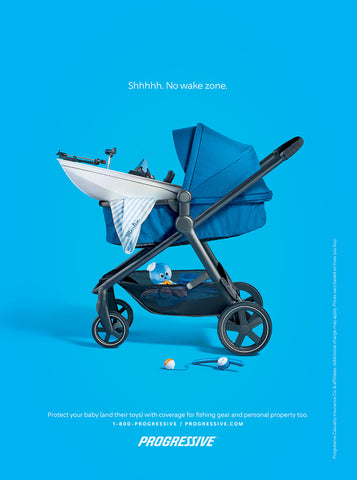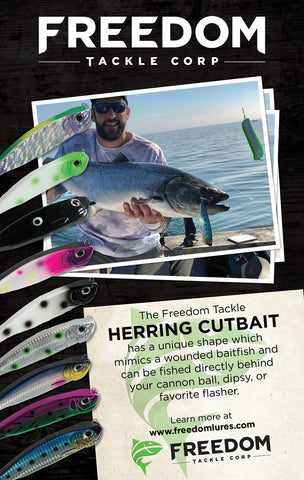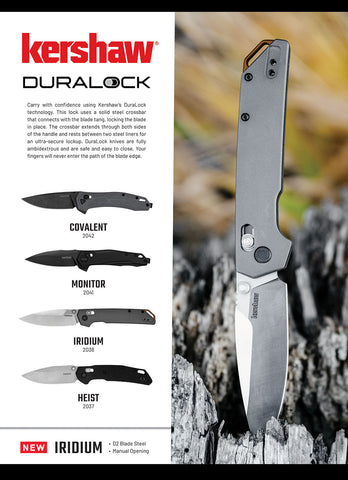After watching him put on a virtual steelheading clinic for several hours, I couldn’t take it any longer and had to find out what he was doing.

Robb Skruck used a finesse presentation to catch this nice steelhead from a crowded pool on the Rocky River, OH.
The debate has raged on for years over which type of reel is best suited for steelhead float fishing—the ver satile spinning reel or the highly specialized centrepin. Each has its advantages and disadvantages, but what is the ideal reel for steelhead float fishing?
I grew up fishing spinning gear for steelhead, and still believe that spinning reels can be highly effective tools for float fishing. First of all, spinning reels are easy to cast and control, making them excellent for beginners, crowded conditions, and overgrown streams. Because of their mass appeal, quality spinning reels with fine drag systems are readily available and highly affordable. But, perhaps the greatest benefit of spinning reels is their flexibility. I love to float fish, but sometimes conditions require that another method be used to catch steelhead. With a spinning reel, it is no problem to bottom bounce or cast hardware when conditions demand it.
Spinning reels are not without their shortcomings, however. Their relatively small diameter spools can create problems with monofilament coils springing off of them in cold weather anytime tension on the spool is relaxed. That small spool diameter coupled with the fact that line comes off of spinning reels at a 90-degree angle often leads to line twist, especially when the reel’s drag is set too loose and a steelhead is taking line as the angler is trying to retrieve it. And the big knock centrepin anglers have against spinning reels is that they are not well suited for extended down-stream drifts. You can make a long drift with a spinning reel by hand-feeding line off of the reel, but it is difficult to control the presentation and you end up creating quite a bit of drag by laying all those coils of line on the water.
The specialized nature of centrepin or float reels produces their greatest strengths, but also some of their greatest weaknesses. The big advantage of centre-pin reels is their ability to (when paired with a long float rod) deliver virtually drag-free drifts for long distances, even in large rivers. This is due to their simple construction with wide spools and low friction bearings, and the fact that line peels off of them inline with the spool. The centrepin angler can allow line to flow off of the reel closely matching the speed of the current, while keeping little to no line on the water’s surface to create drag. Their large spools and inline orientation also mean that issues with line memory and twist are eliminated. However, centrepins are designed specifically for float fishing. It is extremely difficult to bottom bounce or throw hardware with one as I can personally attest. Because they are intended to be totally controlled by the angler, the majority of them have no drag systems. I know that many centrepinners like this, but I am willing to acknowledge that I am not perfect and like the help that a good drag gives me in fighting a big fish. I have seen too many bashed up knuckles, rats nests of line, and lost fish when a steelhead’s unexpected run has caught a centrepin angler off guard.
I am a mechanical engineer by education and also somewhat “thrifty.” Centrepin reels are basically much simpler versions of large arbor fly reels that typically cost more money. It was always very hard for me to justify paying $300-$500 for a spindle, a spool, and a couple of vacuum cleaner motor bearings (seriously). There are a few lower cost centrepin reels, but most centrepins are still very pricey. Although I have owned and fished centrepins, their high price tag and lack of versatility have led me away from using them as my go-to reels.
So if it isn’t the spinning reel and it isn’t the centrepin, what is the ideal reel for steelhead float fishing?

Bonus brown trout caught floating spawn bags with a baitcasting outfit. Notice the pink spawn bag still in the corner of the jaw.
About fifteen years ago, I was fishing New York’s 18 Mile Creek, a tributary of Lake Ontario, for winter steelhead and brown trout. The stream was crowded, the water was low and clear, and the fish seemed to have lockjaw. Countless anglers (including myself) threw everything but the kitchen sink at the fish with little to no results. Occasionally, an angler fishing with a very light leader would hook a fish but couldn’t control it and would break it off. Despite all of this, there was one incredibly successful steelheader on the stream that day. I watched in befuddled amazement as he hammered fish on drift after drift, float fishing with a 7 foot-long baitcasting combo.
After watching him put on a virtual steelheading clinic for several hours, I couldn’t take it any longer and had to find out what he was doing. He introduced him-self as Larry, a guide on the nearby Niagara River. As we talked, I watched him fish. I had never seen such pinpoint casts and drag-free presentations. That was coupled with an outstanding ability to control the fish once hooked. He switched back and forth between spawn bags and egg flies, and caught fish on both. As we talked, he explained the finer points of his technique and the advantages he gained from fishing with a baitcaster.
Before my next trip out, I assembled a combo that I was sure was going to drastically increase my catch rate: I took the baitcasting reel off of one of my old bass fishing setups and paired it with an 8’6” medium power downrigger rod. It was a crude setup, but no more so than the rig I had seen Larry use to pound the steelhead on 18 Mile Creek.
The first few trips with my baitcasting combo proved only mildly successful, so I kept reverting back to my trusty spinning gear. Multiple factors contributed to my lack of success. Among them were the difficulty I had in casting very light rigs on a reel intended for throwing heavy bass lures (backlash city) and trying to control a rod designed for a totally different type of fishing. I ultimately ended up retiring the baitcaster and sticking with spinning and flyfishing outfits for steelhead.

Baitcasters have excellent drag systems, allowing anglers to land really big fish on light line. The author is pictured here with a bonus king caught float fishing with a baitcaster and 8-pound leader.
I started to think about taking a second look at using baitcasters for steelhead several years ago after experimenting with a friend’s new reels on a late summer bass outing. I did some research and learned that developments in baitcasting reels and expanded offerings in casting rods had possibly changed the game. When I decided to give the baitcaster another try, my love of catching steelhead trumped my frugality and I went out and bought a good eight bearing reel and a 10-foot steelhead casting rod. I immediately found the setup easy to cast, excellent for controlling drifts, and superior at fighting fish. On one of my first days fishing the new baitcaster, I put on a display reminiscent of Larry’s on another jam-packed New York river where I single-handedly caught at least double the fish of the twenty or so anglers fishing within sight range. Although I’ve tested different model rods and reels, the baitcasting setup has become my mainstay in almost every steelheading situation.
Baitcasting reels combine many of the advantages of spinning and centrepin reels (plus some bonuses) to make them the ideal reel for steelhead float fishing. They offer the versatility of spinning reels, with the ability to fish floats, bottom bounce, and throw hardware. Newer reels with several or more bearings and highly adjust-able cast control systems allow the float angler to cast very light terminal tackle with ease and accuracy…and very few backlashes. Like spinning reels, they are mass produced and therefore reasonably priced. But, like centrepins, baitcasters can be put into free-spool mode and they flow line inline with the spool. When matched with a long, limber steelhead casting rod, a baitcaster can achieve similar lengthy, drag-free drifts to a centrepin and float rod. And, like centrepins, baitcasters do not typically have issues with line memory or twist.
Baitcasters have a couple of other unique advantages that make them the best reels on the market for fighting steelhead, resulting in a much higher percentage of landed fish. They have far superior drags to spinning reels of comparable price that are finely adjustable and highly responsive when fighting fish. They also offer faster line pickup than either spinning reels or centrepins. A 4 ½ inch diameter centrepin reel will allow you to retrieve a minimum of 14 inches of line (when the spool is empty) per full rotation of the handle. A typical spinning reel used for steelheading has a 1 ¼ inch diameter spool and a 5:1 gear ratio which will recover over 19 ½ inches of line per crank. But many baitcasters have spools of at least 1 inch in diameter and gear ratios of 7:1. This results in the ability to retrieve at least 22 inches of line every time you turn the handle. And as any veteran steelheader knows, the capability to quickly reel up line is essential when a big chromer decides to charge right at you.
As I learned firsthand, you do have to invest in a high-quality baitcasting reel if you are going to be successful with this technique. This reel I use has ten total bearings, a 6.4:1 gear ratio, holds 130 yards of 14-pound test monofilament, and retails for around $150. Most of the major reel manufacturers offer suitable baitcasters for under $200. You want a reel that has at least eight bearings, a 6:1 gear ratio, and holds a minimum of 125 yards of 12-pound test monofilament. I have always casted spinning, float, and fly rods with my right hand, but for some reason used a right-hand retrieve baitcaster. I think this was another reason why my first baitcasting attempt at steelheading failed, as I’ve found it much easier to use a left-hand retrieve reel and cast with my dominant right hand. I advise you to also buy a baitcaster that allows you to cast with your dominant hand.

Versatility is one of the baitcaster’s best qualities. The author caught and released this large steelhead after switching over from a float rig to a plug.
Matching the reel with the right rod is equally as important, and fortunately there are more than a few good rod choices as well. I prefer a 10’ or 10’6” medium power casting rod, because it is equally suited for bottom bouncing, float fishing, and casting hardware, but anything from 8’6” to 11’6” will do the trick depending on your preference and the size of the water being fished. You want a rod that will handle 15 or 17 lb. test line and lures up to an ounce or more if you plan to throw hardware. Lamiglas, Douglas, Stryker, Wright & McGill, Edge and others offer some really nice steelhead casting rods, but my favorite is a 10-foot medium power, moderately fast action rod. It is rated for 8- to 10-pound test line and lures up to an ounce.
Line selection is also significant when steelheading with a baitcaster. I use 12-pound test main line because I will often switch over and throw hardware, but I recommend using no less than 10-pound test monofilament with a baitcaster just in case you have to pick out the infrequent backlash. I then run 18 to 36 inches of 6- to 10-pound fluorocarbon leader line above my hook depending on the water condi-tions. Although the sensitive drag of a baitcaster will allow you to use very light leader line and tiny hooks, you are typically using a stiffer rod than with a spinning reel or centrepin. That makes a baitcasting outfit more conducive to a little heavier line and slightly larger hooks. Throughout my years of steelheading, I have NEVER seen a situation where line lighter than 6-pound fluorocarbon and hooks smaller than size 12 were required to catch fish, and more often than not anglers using such light tackle end up missing strikes and breaking off most of the fish they hook.
A baitcaster is a different animal than a spinning or float reel, and there are a some tricks that are helpful when using one for float fishing. First, use the cast control knob to simplify casting light terminal tackle and minimize backlashes. After you’ve rigged up, tighten the cast control knob all the way and hold the rod out horizontally in front of you with your terminal tackle hanging off above the ground (Note: You may have to drop your float and weights down toward the hook in order to keep everything off of the ground.) Press down on the spool release and hold the spool gently with your thumb. Slowly back off the cast control knob until line flows slowly off of the reel, and you are ready to cast. Another very important procedure is actually running the drift with the baitcasting setup. Cast upstream as always, and run your drift to about 30 to 45 degrees downstream of you as you typically would with a spinning reel. Then, press down on the spool release and control the flow of line off of the spool with your thumb, trying to match the speed of the current and keep line off the water like palming a centrepin reel. Under most conditions, I can effectively drift as far downstream as a centrepinner with my baitcaster, so it’s important to be courteous of any anglers fishing downstream of you if you are fishing in crowded conditions. When you do hook a fish, it is necessary to have your drag set properly. I usually err on the side of caution and set my drag a little on the loose side, at about what I think is 75% of the breaking strength of my leader line. If you aren’t comfortable guessing at what that might feel like, start with the drag loosened up and begin pulling line off of the reel to the first eyelet on the rod. Try to find the point where line comes off of the reel smoothly but with some resistance on a pull that takes about a second from reel to eyelet. Don’t worry if you don’t get it exactly right the first time, the star drag construction of most baitcasters allows for easy adjustment during the fight.

A quality baitcaster like the Pflueger President can be a deadly tool for steelhead float fishing.
Baitcasting reels offer many advantages for steelhead float fishing at very affordable prices. The next time you can’t seem to get those long, drag-free drifts with your spinning gear or you have to walk back to the truck to exchange your centrepin outfit for something else to throw hardware, remember the baitcaster—the ideal, all-around steelhead reel.

MORE GREAT ARTICLES FROM AMATO MEDIA









5 comments
20 years ago fishing off the rocks at Bowmanville creek,salmon were running good,a guy from BC shows up with a bait caster on a heavier 12 footer,he could toss roe and spoons way farther than anyone and put a clinic on fighting fish 20lbs and larger,quickly getting them in the net and released with far less stress on the fish,he said 80%of the guys surf casting in the Pacific fished bait casters and I’ve been hooked ever since
Great article! I started using my baitcaster two years ago for steelhead fishing.
How can I contact Joe?, since I have a lot of questions regarding this topic.
That was very informative, Thank you.
Awesome articles on here.
Joe your article was spot on.